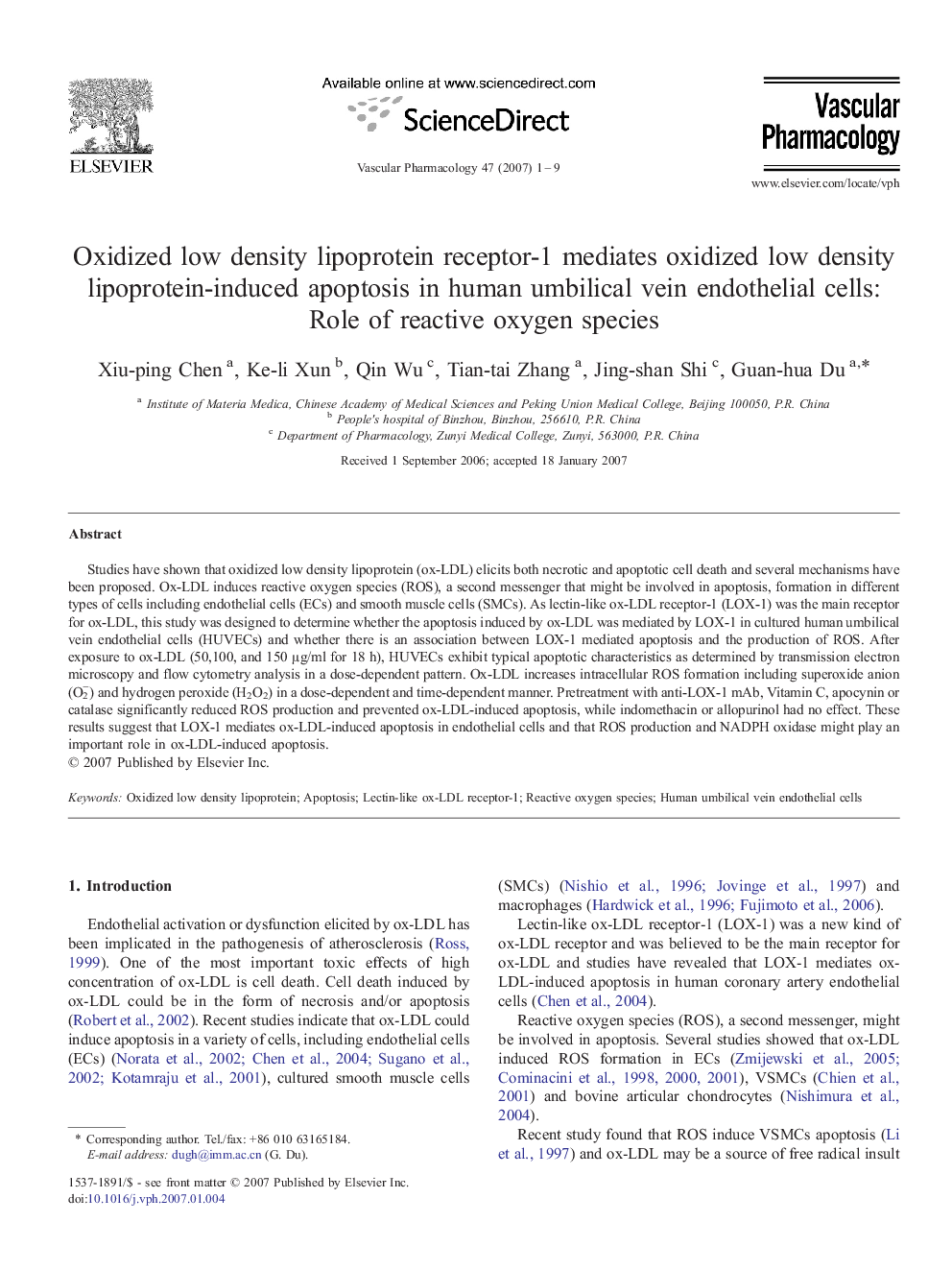| Article ID | Journal | Published Year | Pages | File Type |
|---|---|---|---|---|
| 2574905 | Vascular Pharmacology | 2007 | 9 Pages |
Abstract
Studies have shown that oxidized low density lipoprotein (ox-LDL) elicits both necrotic and apoptotic cell death and several mechanisms have been proposed. Ox-LDL induces reactive oxygen species (ROS), a second messenger that might be involved in apoptosis, formation in different types of cells including endothelial cells (ECs) and smooth muscle cells (SMCs). As lectin-like ox-LDL receptor-1 (LOX-1) was the main receptor for ox-LDL, this study was designed to determine whether the apoptosis induced by ox-LDL was mediated by LOX-1 in cultured human umbilical vein endothelial cells (HUVECs) and whether there is an association between LOX-1 mediated apoptosis and the production of ROS. After exposure to ox-LDL (50,100, and 150 μg/ml for 18 h), HUVECs exhibit typical apoptotic characteristics as determined by transmission electron microscopy and flow cytometry analysis in a dose-dependent pattern. Ox-LDL increases intracellular ROS formation including superoxide anion (O2â) and hydrogen peroxide (H2O2) in a dose-dependent and time-dependent manner. Pretreatment with anti-LOX-1 mAb, Vitamin C, apocynin or catalase significantly reduced ROS production and prevented ox-LDL-induced apoptosis, while indomethacin or allopurinol had no effect. These results suggest that LOX-1 mediates ox-LDL-induced apoptosis in endothelial cells and that ROS production and NADPH oxidase might play an important role in ox-LDL-induced apoptosis.
Keywords
Related Topics
Health Sciences
Medicine and Dentistry
Cardiology and Cardiovascular Medicine
Authors
Xiu-ping Chen, Ke-li Xun, Qin Wu, Tian-tai Zhang, Jing-shan Shi, Guan-hua Du,
